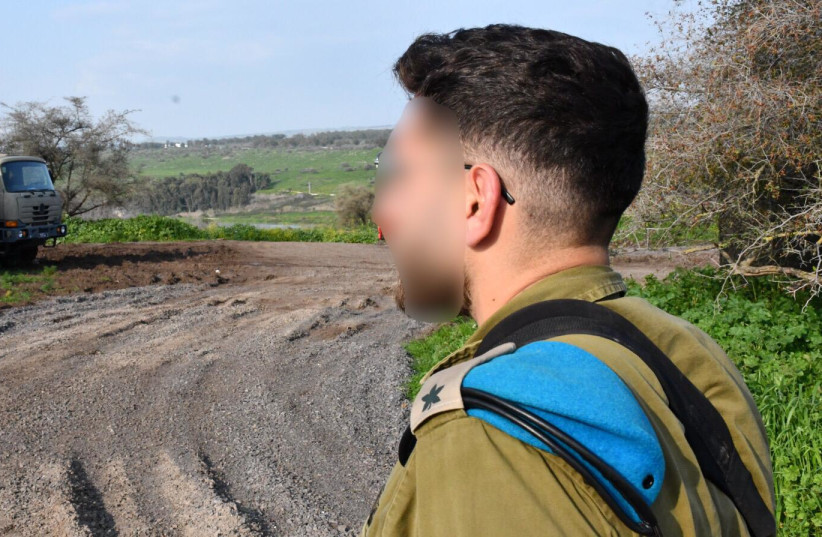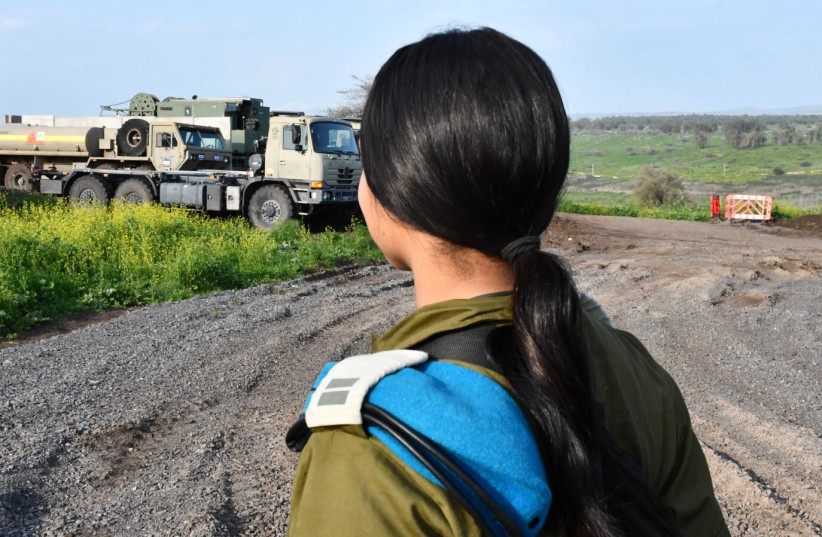Putting together IDF statements, an analysis of the think tank ALMA, and other reports, it appears that the IDF recently struck a Hezbollah drone base and a base where it held long-range rockets, both around 100 kilometers away near Baalbeck.
Indications from the IDF were that it traced back multiple drones that attacked Israel on Monday to the drone base in question.
But how did Israel track these drones to that location?
Although the IDF virtually never wants to reveal its most classified tricks, chances are the special radar of the IDF 611th Battalion of the 282nd Firepower Brigade was involved.

The Jerusalem Post recently had the opportunity to visit the radar near the northern border, in a location that cannot be disclosed.
Generally, the radar is used to assist Iron Dome in tracking and shooting down rockets and to assist artillery in accurately hitting nearby engaging Hezbollah and Hamas forces.

IDF sources have said that the unit is involved in every rocket fire and artillery attack, moving seamlessly from the Golani brigade to the Givati brigade to the Nahal brigade and assisting a myriad of units from IDF Divisions 98, 99, 162, 36, and 143, covering the northern and southern borders.
But in this case, the radar may have been used to track drones around 100 kilometers away.
Of course, there are other ways the IDF can also track enemy assets far off its borders, whether special aircraft with long-distance tracking capabilities, drones, or human spies on the ground.
But this radar has special capabilities beyond some of those other choices.
According to Israel Aerospace Industries' publications, the ELM-2084 is a mobile S-Band Multi-MissionRadar(MMR) Family featuring an advanced 3D Active Electronically Steered Array (AESA) for Air Defense and Artillery Weapon Location (WLR) Missions.
In the Air Defense mode, the radar detects and classifies all types of airborne targets and generates a real-time Air Situation Picture (ASP).
That is on paper.
Up close, one can see there are multiple pieces to the radar unit.
One piece has a large black antenna propped up by a large green structure, which is the heart of the radar operation, all of which have special defensive measures around to protect from attack or even more generic damage by outdoor elements.
A special generator connects to the radar antenna apparatus, which also has protective measures.
Dozens of meters away is the command center from which the IDF radar unit controls the antenna and passes on the data to a wide variety of Israeli air attack, air defense, and land forces.
Generally, the unit is staffed by a mere four to five soldiers at a time, some of whom are officers. Each soldier had their own high-speed computer, along with one newly installed plasma screen to provide a wider regional perspective.
On a tactical level, I saw the forces spring into action while I was present in the command center. There had been an anti-tank missile attack.
Quickly and with no ceremony, but a short surge of intensity in the air, the IDF monitors conveyed to the relevant IDF forces both the coordinates from which the missile was fired and the location where it landed.
This was designed to enable the forces to immediately counterstrike the missile firing squad before it could escape.
At a strategic level, translating all of the radar’s capabilities into concrete comparative advantages versus the F-35’s spying capabilities, or those of the Oron aircraft, IDF sources noted aircraft cannot stay in the air permanently. In contrast, the radar can be tracking the enemy as long as it takes to defeat that enemy, and does not tire, given the ability to simply switch shifts on the ground.
This kind of radar on the ground is also less impacted by the time of day or the weather, though aspects of the operation can require maintenance from time to time, coping with the intense winter winds in the North.
Also, the radar is said to give more exact data than aircraft and radar operators commented that just because aircraft have a potential view of up to 100 kilometers or some other number, does not mean they have the same utility, especially taking into account changing topography and maritime areas.
Nearby the hardware which makes up the radar are two large trucks which can move the radar at a moment’s notice. There are a variety of other vehicles also present for less complex transportation purposes.
In fact, the radar was rushed down South on October 8 and, according to IDF sources, was even placed in harm’s way temporarily to get close enough to the front to maximize results, something which would normally be against regulations for risking such expensive hardware and highly trained technicians.
Situation in the north
In the North, the unit also has dozens of other soldiers to perform security and logistics functions and a variety of temporary quarters for being able to live at the position for an extended period.
Only shortly before the Post visited the unit did they receive a more solid bathroom and showing apparatus, until then having to deal with more makeshift options.
The unit receives regular food and other resupply deliveries as well as inspections by IDF Maj. “D” (whose full name is classified) to ensure that everything is functioning as it should.
D, from Givatayim, accompanied the Post throughout the tour, explaining all of the technical and strategic considerations relating to the radar. He has been in the IDF since 2015, and has commanded the specific radar unit for around one-and-a-half years, and will remain at that post until winter 2024, after which he is expected to take on a different mission into 2025.
Both D and other IDF sources said that the radar unit had substantially improved its capabilities at tracking drones, given the jump in drone attacks from Hezbollah during the war as compared to pre-war when Hezbollah drone attacks were an extremely rare event.
IDF sources and D said that radar monitors had gotten much more used to the “feel” of how drones move and maneuver as opposed to the standard trajectory of the arch-like Hezbollah rockets.
The unit has also faced nearby attacks, though unlike the IDF Air Force base on Meron and the IDF Northern Command, it has not yet suffered direct hits or lost soldiers.
Lt. “M,” of Hadera, previously served as a soldier-monitor for two years, was D’s sub-commander of the current radar shift.
D was very authoritative and moved around the base at a focused speed. M mixed together significant humility along with a quick switch to being highly focused and in control.
Both D and M seemed even more focused that day on shooting down rockets and issuing warnings for other attacks, with facilitating counterstrikes for their unit being secondary. There are other radar units in the North and the South, and each unit may have slightly different focuses, even as all of the units are involved in both offense and defense.
M said that besides intermittent visits by their unit commander, Lt. Col. “B,” their highest ranking visitor was by the Artillery and Firepower Command Chief Brig. Gen. Yair Natnas.
When Natnas visited, M said that they presented him with a classified report which was also shown to the Post which fully detailed the enormous volume of attacks which the radar has facilitated.
Part of what is impressive about the radar unit is how much it adjusts.
D and IDF sources said that until recently, it did not give home front or special IDF frontline rocket warnings, but that recently, it has saved units under attack around 70 times.
IDF sources suggested that the radar was a critical part of a web of technology that slowly but surely defeated the Hamas rocket threat after over a decade of being in Hamas’s crosshairs.
With the radar working overtime both in close and long range battles, likely including the recent IDF strikes in Baalbeck, the question is whether and when there will be a successful security outcome on the northern border facing a much tougher adversary.
